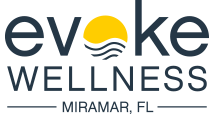The 4th step of the 12 steps of Alcoholics Anonymous is considered the most important step a person will accomplish in their recovery. The 12 steps of Alcoholics Anonymous is what all of the 12 step programs are based on. Today there are approximately 40 different 12 step programs that each help people overcome substance use disorder (addiction to drugs and alcohol) and other behaviors that make a person’s life unmanageable. The most well-known include- Alcoholics Anonymous, Narcotics Anonymous, Heroin Anonymous, Cocaine Anonymous, Crystal Meth Anonymous, Al-Anon (for the family of alcoholics and addicts), Co-Dependents Anonymous, Gamblers Anonymous, and Overeaters Anonymous. 
Why is the 4th Step So Important?
The 4th step is the most significant because it is when a person lists the reasons, he or she is likely to have become addicted to drugs, alcohol, or both. It is called a moral inventory because it helps a person identify who, what, and how they were harmed. In all cases, the way a person who struggles with substance use disorder responds to these harms done to them is by drinking and drugging. Additionally, most addicts and alcoholics also have diagnosed or undiagnosed emotional and mental health disorders as a result of certain situations (harms done to them) from their past that were extraordinarily abusive. The 4th step is meant to help uncover and address all of these situations honestly and openly. Another objective of the 4th step moral inventory is to help someone recognize their part in that they list that others caused them. For example, an individual may have been abused by their parents physically as a child. There is no doubt that that was wrong and that it should never have happened. This individual is a victim, and their parents were to blame. It is indeed tragic and unfair. However, for a recovering addict or alcoholic, through completing the 4th step, they will realize what their part is in the scenarios not as a child but as adult years and years later. Undoubtedly the example above is challenging to understand how anyone would have any part in child abuse or any other situation that victimized them. The purpose of the 4th step is to help these persons recognize even more deeply why they drink and drug. By taking a ‘thorough inventory of ourselves’ of all that a person has experienced and who did it, how it hurt them and what they did about it, it is possible to see how people with addictions react. Their part is that they use these past wounds as justification for why they need too or cannot stop using or drinking.
The Four Sections
Four sections are covered broadly in the 4th step inventory. Each chapter identifies major aspects of someone’s life that contribute to their problem with drugs and alcohol. A 4th step moral inventory requires the help of a sponsor or substance abuse counselor or someone who has completed the 12 steps. To make the process easier and to get more out of it, some numerous workbooks and guides provide writing exercises, as well as reading from the AA book other 12 step books, to show someone how to complete a 4th step inventory carefully. The four sections that are covered when a person does their moral inventory include:
- Resentments
- Anger
- Fears
- Sexual/Romantic relationships
Under these four categories, a person will uncover and assess who, what, how, and why they have resentment, anger, fear, or uncomfortable feelings towards a past or present relationship. An excellent 12 step workbook will not only help someone new in recovery let go of anger, fear, and resentments, but it will help them to begin the healing process. The 4th step inventory is self-revealing, emotional, and can often make people struggle in their sobriety. The good news is that once a person completes their 4th step inventory and presents it to another person in recovery or a counselor, they walk to the other side and feel better and more at ease. Some persons will require professional counseling and therapy for significant abuse, trauma, or neglect. The 12 steps should not replace professional mental or emotional health counseling or theory. However, many recovering alcoholics and recovering addicts have experienced sexual abuse, rape, incest, physical abuse, neglect, torture, and humiliation. The histories of where so many successful recovering individuals came from are incredible and provide hope to others that recovery is possible.


